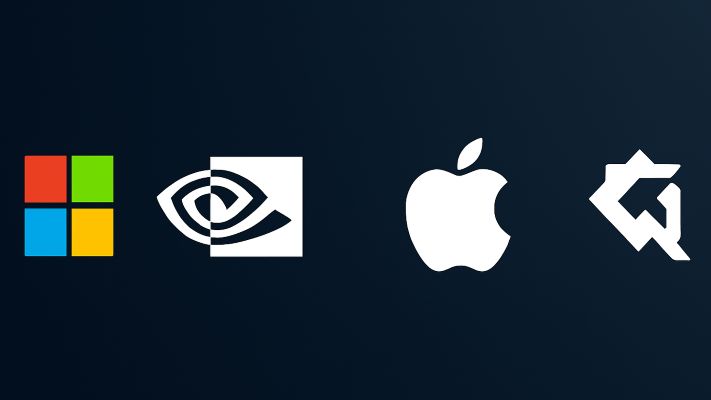AI Navigation
- articleAI Trends
- lightbulb_2AI Tips
- assistant_navigationAI Navigation
- heatHot Articles
- emergency_heat_2Hot Tips
- format_list_numberedPrompt Formatter
- psychologyTest Center(RPI)
November 21, 2025 · 24-Hour AI Briefing: Microsoft–Nvidia’s $15B Power Move, Apple’s M5 AI Leap, and Qwen Reshapes the Open-Source Landscape
The past 24 hours marked another reshuffling of global AI power. Microsoft and Nvidia jointly committed up to $15 billion to Anthropic in a massive compute-for-capital pact. Apple revealed a major AI performance jump with its next-generation M5 chip, signaling a push toward on-device generative intelligence. And Alibaba’s Qwen officially overtook Meta’s Llama to become the world’s leading open-source model ecosystem.
These aren’t isolated events—they hint at three defining battles of 2025: compute dominance, edge intelligence, and open-source leadership.

Microsoft + Nvidia invest up to $15B in Anthropic, launching a new “compute lock-in” era
Microsoft and Nvidia will jointly invest up to $15 billion in Anthropic. Nvidia may contribute up to $10 billion, while Microsoft commits up to $5 billion. In return, Anthropic will purchase $30 billion worth of Microsoft Azure compute over the coming years.
Analysis:
This is a classic compute-locking deal: securing long-term model loyalty through future consumption commitments. Anthropic’s $30B Azure pledge effectively binds it to Microsoft’s ecosystem for years, strengthening Azure’s position against AWS and Google Cloud.
Nvidia’s up-to-$10B participation shows it wants more than GPU sales—it wants deep influence over the next generation of frontier models.
The $30B isn’t pre-payment; it depends on Anthropic’s training cycles.
For Anthropic—facing GPT, Gemini, and DeepSeek—this move is part survival, part strategy.
Apple reveals M5 chip AI performance: 27% faster text generation, 3.8× faster image generation
Apple announced the first detailed AI benchmarks for its upcoming M5 chip. Compared with the M4, the M5 delivers 27% faster text generation and 3.8× faster image generation.
Analysis:
Apple is shifting from “AI-optimized devices” toward a full “on-device intelligence platform.”
A 3.8× boost in image generation isn’t a routine GPU upgrade—it shows targeted acceleration in AI compute units, memory bandwidth, and specialized engines.
This means future iPhones, iPads, and Macs will run far more complex image, video, and multimodal models locally.
Apple is building a personal, on-device generative AI workstation, distinct from the cloud-centric strategy of OpenAI, Google, and Nvidia.
Whether this path wins depends on developer adoption and ecosystem maturity.
Alibaba’s Qwen surpasses Llama globally, becoming the #1 open-source model ecosystem
Alibaba announced that its open-source Qwen family has overtaken Meta’s Llama in total downloads and derivative models, becoming the world’s leading open-source model ecosystem.
The new Qwen3 series reaches performance levels comparable to GPT-5 and Gemini 2.5-Pro, and supports 119 languages.
Analysis:
Qwen has amassed tens of millions of downloads across Hugging Face and ModelScope—well above official Llama numbers. Developers are choosing Qwen for practical reasons: better fine-tuning experience, stronger controllability, and more efficient engineering.
While Meta hesitated on licensing, Alibaba opened nearly everything—aligning more closely with the true spirit of open source.
With support for 119 languages, Qwen isn’t trying to be “another open-source model”—it’s trying to become the universal global foundation model standard.
This may be the biggest shift in the open-source ecosystem in 2025.
For more AI insights, visit:
https://iaiseek.com/en
Explore major AI events from the past 72 hours:
📎 November 20 · Nvidia’s blowout earnings, TSMC’s record revenue, Gemini 3 Pro’s breakthrough moment